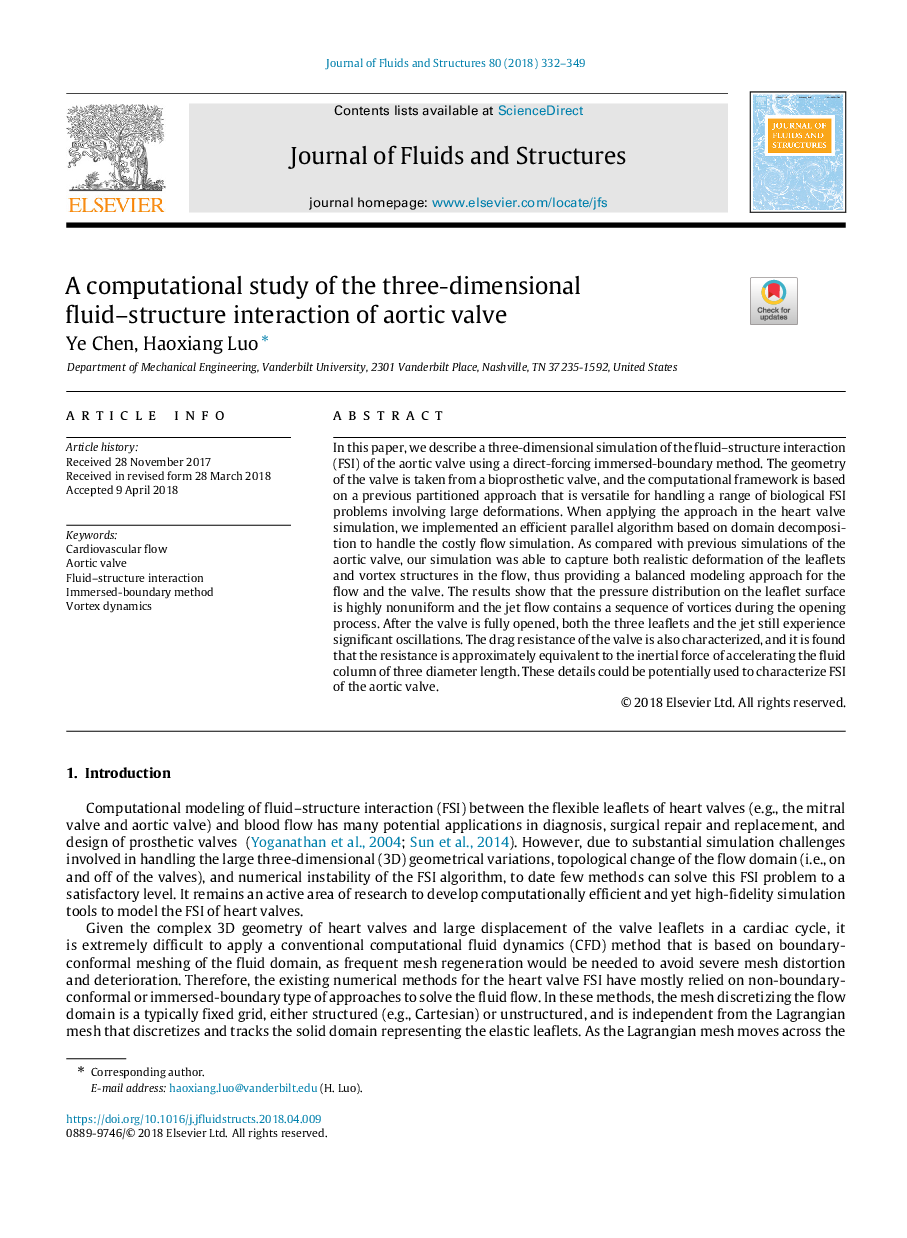| Article ID | Journal | Published Year | Pages | File Type |
|---|---|---|---|---|
| 7175768 | Journal of Fluids and Structures | 2018 | 18 Pages |
Abstract
In this paper, we describe a three-dimensional simulation of the fluid-structure interaction (FSI) of the aortic valve using a direct-forcing immersed-boundary method. The geometry of the valve is taken from a bioprosthetic valve, and the computational framework is based on a previous partitioned approach that is versatile for handling a range of biological FSI problems involving large deformations. When applying the approach in the heart valve simulation, we implemented an efficient parallel algorithm based on domain decomposition to handle the costly flow simulation. As compared with previous simulations of the aortic valve, our simulation was able to capture both realistic deformation of the leaflets and vortex structures in the flow, thus providing a balanced modeling approach for the flow and the valve. The results show that the pressure distribution on the leaflet surface is highly nonuniform and the jet flow contains a sequence of vortices during the opening process. After the valve is fully opened, both the three leaflets and the jet still experience significant oscillations. The drag resistance of the valve is also characterized, and it is found that the resistance is approximately equivalent to the inertial force of accelerating the fluid column of three diameter length. These details could be potentially used to characterize FSI of the aortic valve.
Keywords
Related Topics
Physical Sciences and Engineering
Engineering
Mechanical Engineering
Authors
Ye Chen, Haoxiang Luo,
